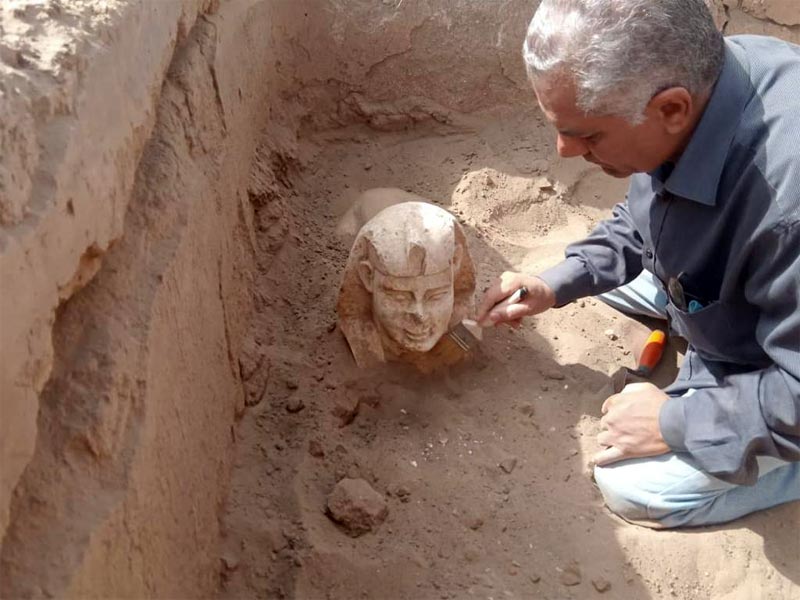The Egyptian archaeological mission from Ain Shams University revealed a smiling Sphinx, a bilingual royal plaque, and the remains of Claudius' cabin next to the Dendera Temple.
The Egyptian archaeological mission from Ain Shams University, headed by Prof. Mamdouh El-Damaty, former Minister of Antiquities and Professor of Archeology at Ain Shams University, revealed the remains of a limestone cabin dating back to the Roman era, during archaeological excavations in the area east of the Dendera Temple in Qena Governorate, in which a temple of the god Horus was built from the Roman age.
Dr. Mahmoud El-Metini, President of Ain Shams University, explained that the Ain Shams University mission in Dendera is the first Egyptian mission in this distinguished site, and added that the archaeological evidence at the site is promising and promising results that will add a lot to the history of Egyptian civilization in the Greek and Roman ages, and that Ain Shams University will support the continuation of work in Dendera site for many excavation seasons to come.
Prof. Mahmoud El-Metini had the opportunity to praise the fruitful cooperation with the Supreme Council of Antiquities and the Ministry of Tourism and Antiquities, and he hopes for continued cooperation in the field of Egyptian antiquities and heritage.
Dr. Mamdouh El-Damaty explained that the remains of the discovered maqsura are a platform consisting of two levels with sloping foundations and floors, inside which a water-storage basin made of red bricks covered with mortar with stairs was found. It can be dated to the Byzantine age, according to the pottery discovered at the site.
He added that during the cleaning of the basin, a sphinx-shaped limestone statue was found representing one of the Roman emperors, wearing the headdress known as the Nemes, with a bridge over his forehead, indicating that the initial examination of the face of the statue indicates that it is likely to be of Emperor Claudius.
Dr. Mamdouh El-Damaty described the statue as wonderfully beautiful, as its face is characterized by royal features depicted accurately, and a slight smile appears on its lips, which have two dimples on both ends, and the remains of yellow and red appear on its face.
On the stone floor below the statue, a royal painting from the Roman age was revealed, and it is one of the paintings known as bilingual written, written in hieroglyphics and demotic.
The mission will continue the excavation work in the area of the Horus Temple, east of the Dendera Temple, and in front of the Isis Gate, to uncover the road linking them.
It is worth noting that the mission had begun excavation work in the middle of last February, as it carried out a radar survey of the Osirian halls in the Dendera Temple, and a magnetic and radio survey in the area east of the wall surrounding the temple in front of the Isis Gate, with the knowledge of a team from the National Institute for Astronomical and Geophysical Research.


.svg)




